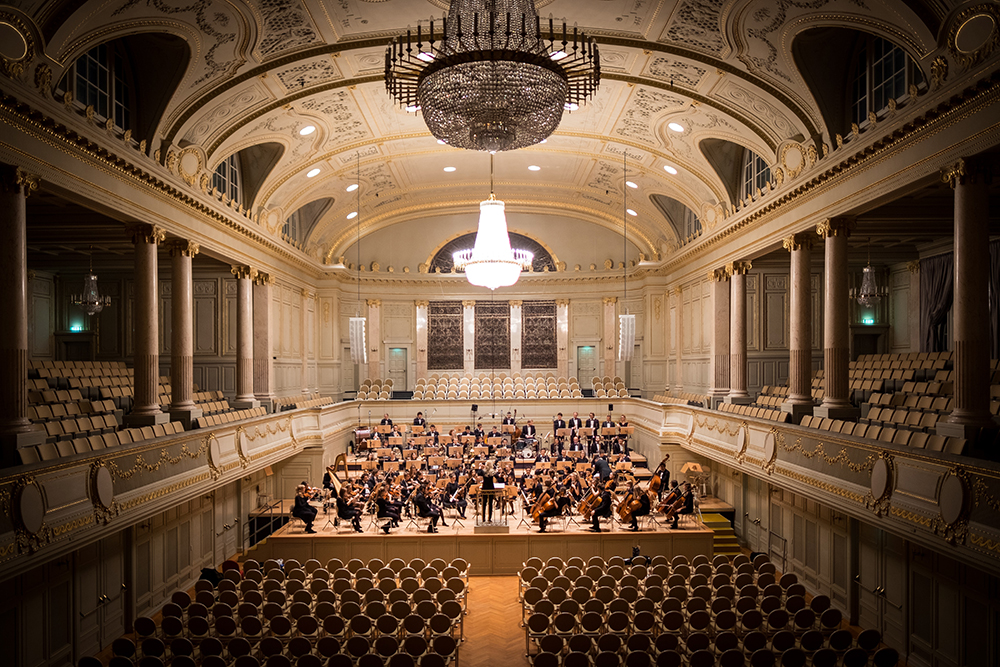
Symphony or Cacophony? Noisy Shop Floors and What They Mean for Health and Safety
If you take in the expanse of a shop floor from a high vantage point, you’ll quickly be reminded of how much coordination is required to keep the operation functioning smoothly. To the trained eye – and probably the untrained eye as well – analogies with a symphony come to mind. Just as you think you recognize the pattern in the flows of people, machines, and materials, something changes, and a new pattern emerges.
Of course, many may find this analogy to be overly romanticized. A factory can just as easily be a messy, less-than-elegantly orchestrated affair. That’s especially true when you consider the sounds more so than the sights. It’s not a symphony, it’s cacophony. It’s not elegance, it’s noise – 80 decibels’ worth in the average factory, approaching OSHA’s recommended exposure limit of 85 decibels.
A brief history
The concept of the factory as it’s known today was born in the Industrial Revolution, in the late 1700s and early 1800s. But the premise of all that turbulent innovation was always the same: find more ways to amplify human power – with water power, with steam power. And exerting power is inherently noisy.
By the early decades of the 20th century the shop floor that’s familiar to us today had largely taken form. And noise levels reached new highs. For this we can credit (and blame) the city of Milwaukee, which at the time was the world’s Silicon Valley of industrial innovation. A cluster of local manufacturers had each built an industry-leading business on an important innovation, inventing or radically improving staples of the modern shop floor – all of which added to the surging decibel levels. A few examples:
- Conveyor belts (by the Chain Belt Company, later Rexnord) – up to 95 decibels
- Overhead cranes (by Pawling and Harnischfeger, later Joy Global) – 85 decibels
- Roller mills (the Edward P. Allis company, later Allis Chalmers) – 80 to 100 decibels
The history of the world’s response to high-noise environments and the assault on human hearing can be thought of in terms of two themes: keeping the bad sounds out, and letting the good sounds in.
The recent history of noise reduction
Although ear plugs were patented in 1884 and further refined over the following decades, historically the need for hearing protection was typically framed in terms of warfare. It wasn’t until the 1970s that industry became proactive about addressing threats to hearing on shop floors and other work sites. Today, hearing protection comes in the form of ear plugs or external ear muffs, many of which are custom-designed to address a specific noise level or to provide a variety of other benefits.
High-noise environments like shop floors also make it difficult to hear the human voice (typically 70-76 decibels), a problem that may be worsened by wearing hearing protection. Today high-noise headsets solve the problem simply and efficiently. They fit comfortably under hard hats or other protective headgear. When everyone on the shop floor is outfitted with a headset and its paired receiver/transceiver, the human voice speaks directly into the listener’s ear, in essence bypassing the noise-filled gap in between.
But while keeping harmful noise out helps prevent just one type of injury (i.e., to hearing) facilitating communication through high-noise headsets can reduce the incidence of all types of injury – from falling objects, from defective equipment, from collisions, from areas of loose footing. That’s because those headsets will ensure that all warnings will be heard, whether hours in advance or in a matter of seconds before the potentially dangerous situation occurs.
The day after tomorrow
A few years ago Tesla put out a video ad portraying the workings on the shop floor in one of its factories. The ad features slightly speeded-up video of “160 high precision robots” (according to words briefly flashed on the screen) in various stages of assembling a car. While there’s also a brief nod to “Over 3,000 skilled technicians,” the robots are clearly the stars. The sense of harmonized movement is almost mesmerizing, and pretty impressive.
But the entire audio track consists of the hard pulsing song Perfect Day, by the Constellations. There’s not a single snippet of ambient sound from the shop floor. The ad may well give the unconscious impression that robots work virtually silently – and perhaps raises the question of whether high noise levels in a factory might not be inevitable.
But robots are not a solution to the communication barriers found on shop floors. Robots may or not be less noisy than other machines, but it’s not other machines that are being replaced by robots; it’s human labor. Robots will continue to work alongside conveyors, overhead cranes, roller mills, and the like for the foreseeable future, and each of these will continue to generate high noise levels.
Technology is indeed the solution to the problem of keeping shop floors safe by enabling reliable communication. But that technology comes in the form of traditional hearing protection coupled with high-noise headsets – not as glamorous as robots, perhaps, but each on the leading edge in their own way.
Author: Rick Farrell, President, Plant-Tours.com
Rick is North America’s foremost expert in improving manufacturing group communication, education, training and group hospitality processes. He has over 40 years of group hospitality experience, most recently serving as President of Plant-Tours.com for the last 18 years. He has provided consulting services with the majority of Fortune 500 industrial corporations improving group communication dynamics of all types in manufacturing environments.







